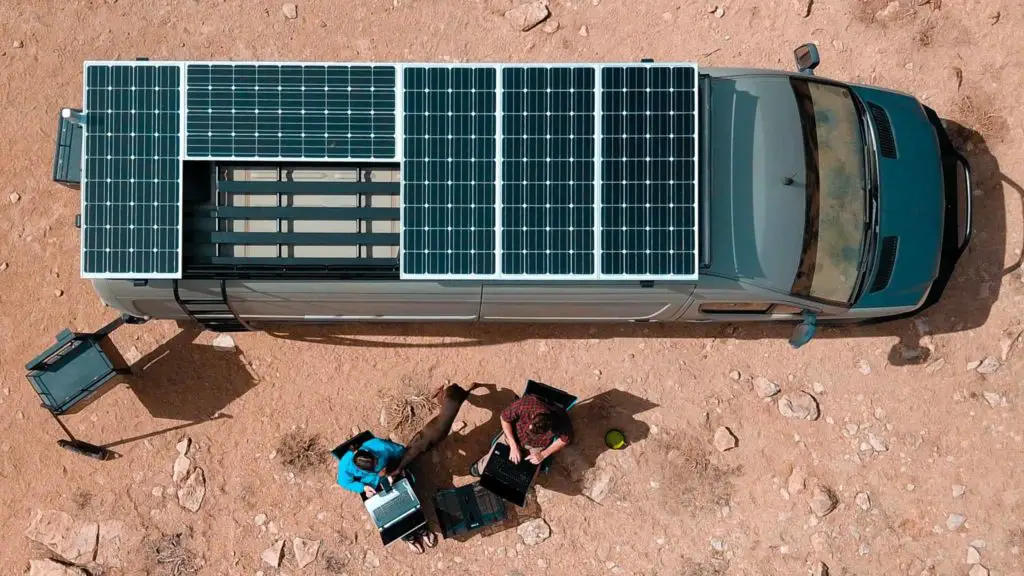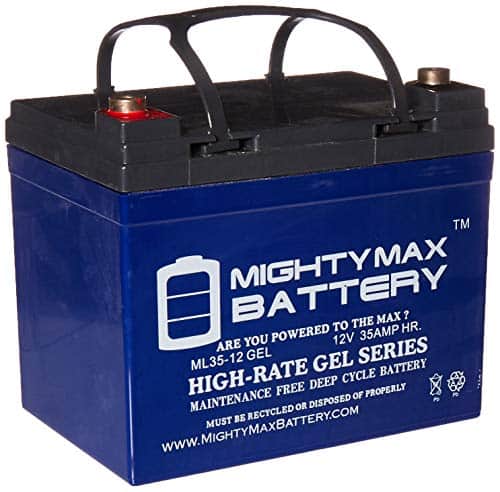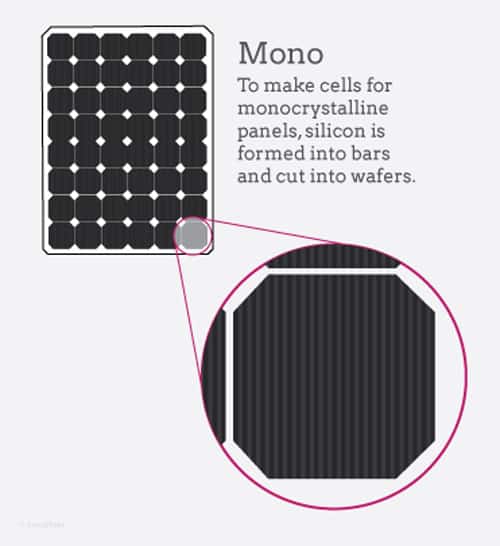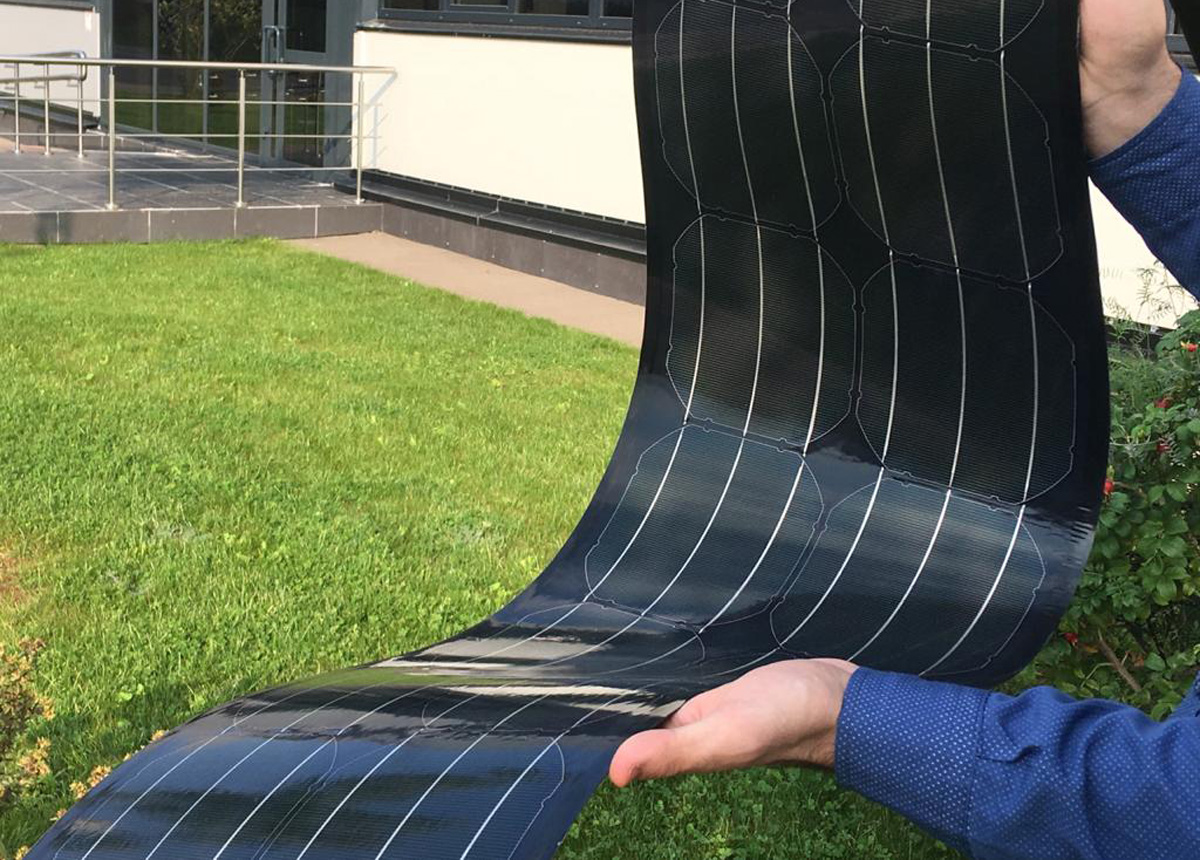When joining in on the van life movement, you have a lot of decisions ahead of you, including how you’ll get power. If you opt for solar power, how many solar panels will you need for your van?
How many solar panels you will need for your van depends on how much power you need. Weekenders will need about 200 watts of power, while people who want to take week-long trips will need 400 watts, and full-time van lifers will need at least 600 watts.

Of course, these are general guidelines, and they will change depending on your power needs, the efficiency of the solar panels you choose, and the strength of the sun. In the following article, we will explore the criteria that influence the number of solar panels you will need. We will discuss the different options you have for power sources and how to select the right panel for you.
The Number of Solar Panels You Need
As we will learn, the number of solar panels you need for your van varies depending on how many batteries you have in your van, the power output of those batteries, and the wattage of the solar panels themselves.
*Note that you will be installing these batteries into your van’s electric system, and they are not the batteries used to run the van’s engine.
Here is a general breakdown of
| Collective Output of Batteries | Panel Wattage Needed |
| 100 useable amps | 200 watts |
| 200 useable amps | 400 watts |
| 300 useable amps | 600 watts |
| 400 useable amps | 800 watts |
As a general rule of thumb, you’ll need twice as many watts of solar power than usable battery amps. If you increase your wattage, you will charge your batteries faster. For instance, if you need 400 watts of power, you can install one 400 watt panel, or two 200 watt panels.
Why Solar Power?

There are many reasons to choose solar power over a generator or other power sources. Let’s explore some of them.
- Save money in the long run: By choosing solar power, you’ll be making a one-time investment that will save you thousands of dollars. Harnessing the sun’s rays is a free activity, unlike filling up a fuel tank or hooking up to a power outlet at a campsite. Gas prices are steadily rising, and at campsites, you need to pay overnight fees. Solar power allows you to avoid most of these costs, saving you plenty of cash over time.
- Use a clean energy source: Solar power is a renewable energy source that doesn’t harm the environment when harnessed. There is no feasible limit to how much energy we can receive from the sun, and by using it, you’ll have an “unlimited” source of energy as well.
- Lower your carbon footprint: As we’ve just learned, solar power is a clean source of energy. The use of it emits no greenhouse gases whatsoever. By installing solar panels in your van, you’ll lower your carbon emissions greatly.
- Have a power source in remote locations: As a van lifer, you probably want to adventure to far off locations, removed from cities and society. Inherently, these locals won’t be equipped with gas stations or power outlets. Having a
solar panel set up on your van allows you to recharge wherever you are. - Save on storage: By putting your power source on the roof of your vehicle, you’ll be able to save on precious interior space. Depending on the amount of sun you get, you can potentially forgo a generator altogether, giving you more room for adventure accessories.
Understanding Solar Panels
Before we can determine how many solar panels your van will require, we should briefly touch on how solar panels work. The sun releases photons that are made up of atoms. Atoms have three parts; protons, electrons, and neutrons. By separating the electrons from these atoms, we can create electricity.
A
The effectiveness of a
To simplify things, the main point of discussion for solar panels is the wattage (or amount of power) that they produce.
The Bigger, The Better… Sort Of
When shopping for solar panels, it’s important to consider the areas you’ll be traveling through. Will you mostly be exploring the sunny states like Arizona, where the sun shines for 90% of days? Or will you be traveling north through mountainous regions that don’t get as many hours of sun?
With solar panels, it’s worth considering how much sunlight you’ll get, on average. You may only need 300 watts of power, so you might assume that purchasing a single 300-watt
AC and DC Power
There are two types of power that you’ll need in your van, AC and DC. These are both electrical currents that flow at different voltages. DC (or direct current) flows at a constant power level of 12 volts. AC (alternating current) flows at varying levels of voltages, usually from -120 volts to +120 volts.
The appliances that you’ll use in your van will need either AC or DC power. The batteries in your van will produce a steady stream of 12-volt power. To provide both sources of power, you’ll need a converter to turn the DC in AC. The more devices you plan to power (of either type), the more batteries you’ll need.
There is an easy way to tell which devices are AC or DC. Since the electricity that comes out of our home outlets is AC, most appliances run on AC. Things like blow dryers, coffee makers, microwaves, and blenders are all AC. These devices usually have a single cord that plugs directly into the wall.
Other devices like cell phones, laptops, and cameras usually have a cord that leads to a mini converter (a brick or square) that then leads from the converter to the wall. These devices run on DC. The AC current runs from the wall to the converter, where it is changed to 12v DC power and then fed to the electronics.
You can see how you’ll need a converter in your car to power the many accessories you’ll want for van life.
How Much Power Do You Need?
When looking at purchasing solar panels, you need to first determine how much power you’ll need for life in your van. This will vary depending on how you are planning on using your vehicle. I recommend using the Renogy Calculator to determine your needs.
Short Trips or Minimalists
If you are planning on doing pared-back camping trips where your van mostly serves as a place to sleep, then your power needs are going to be low. Charging your phone and camera and powering your internal lights are your main focus. You don’t need to keep a refrigerator running or plug in any cookware.
You will be more than equipped with one battery providing 100 amp hours of power. If you’re somewhere sunny, then one 200 watts
A Week Trip or Luxurious Camping
If you plan on spending about a week at a time in your van, or want more luxuries when you go for your long weekend trips, then you’ll want three batteries providing 200 amp hours of power. If you get 200 amp hours of power, you’ll need 400 watts worth of solar panels to keep them charged.
Full-Time Van Life
For full-time van life where you have accessories that run 24 hours a day (like a fridge) and many other AC and DC devices, then you’ll want around 300 amp hours of power and 600 watts of solar power. You can break the 600 watts up into whichever variation of solar panels you prefer.
For instance, you can use three 200 watt panels, two 300 watt panels, or one 600 watt panel. The deciding factors will be the space you have on the exterior of your van to mount all of these panels and the weather in your intended travel region.
What Type of Battery Do You Need?

The next consideration when it comes to purchasing solar panels for your van is what type of batteries you want to use. There are two main types of batteries to choose from: lithium batteries and AGM batteries.
- Lithium batteries – These batteries are lighter, last longer, and have higher usable amps. These batteries can be drained to nothing without being damaged, unlike AGM batteries.
- AGM batteries – AGM batteries are cheaper, heavier batteries that don’t last as long. These batteries get damaged every time they are drained past 50% of their capacity, which lowers their lifespan greatly. Because of this, these batteries are generally considered to have half of the nominal capacity that they claim to have.
Think of it this way:
| Battery Type | Number of Batteries | Amp Hours | Actual Useable Amp Hours |
| Lithium | 1 | 100 | 100 |
| Lithium | 2 | 200 | 200 |
| Lithium | 3 | 300 | 300 |
| AGM | 1 | 100 | 50 |
| AGM | 2 | 200 | 100 |
| AGM | 3 | 300 | 150 |
Clearly, Lithium batteries trump AGM batteries. Their price also reflects this. You can expect to pay 50% more for a lithium set up than an AGM bank, but you’ll likely save thousands in the long run.
Charging Your Batteries
So, how long does it take to charge these batteries? Well, that depends on the wattage of the solar panels. A 100 amp battery is equivalent to 1200 watts. Watts are measured over an hour, so a 1200 watt (100 amp) battery would last 12 hours – IF it was being drained by a device that used 100 watts of power per hour. If the device was using less, it would last longer, and more, shorter.
Knowing this, we can see that one 200 watts
Number of Solar Panels You Need Based on Your Style of Travel
Now that we have a good understanding of the science and devices involved, we can cross-reference these with your style of travel to determine the number of solar panels needed. For these calculations, we’ve used an average daylight time of six hours per day.
| Style of Travel | Battery Type | Amp Hours | Actual Useable Amp Hours | Usable AH in Watts | Wattage of Solar Panels Needed | Hours to Recharge |
| Short Trip | Lithium | 100 | 100 | 1200 | 200 | 6 |
| Week Trip | Lithium | 200 | 200 | 2400 | 400 | 6 |
| Full Time | Lithium | 300 | 300 | 3600 | 600 | 6 |
| Short Trip | AGM | 200 | 100 | 1200 | 200 | 6 |
| Week Trip | AGM | 400 | 200 | 2400 | 400 | 6 |
| Full Time | AGM | 600 | 300 | 3600 | 600 | 6 |
Types of Solar Panels
As with batteries, there are different types of solar panels to choose from. All of these panels will convert sunlight into usable electricity, but their form and quality vary.
Monocrystalline Solar Panels

These panels are easily recognizable by their consistent dark color and rounded edges. These are some of the most efficient panels, with many products boasting over 20% efficiency.
The silicon in these panels is extremely pure, which makes the electron retrieval process much more effective. These panels produce more power per square inch than other panels, which makes them an excellent choice for when you need to save space.
Best For: Long term campers, those who intend to travel through the desert, anyone who can afford them.
Polycrystalline Solar Panels

These panels are differentiated by their blue, fractal appearance. These panels are much cheaper than monocrystalline ones because the process of creating them is faster. This process does mean that polycrystalline panels are slightly less efficient, measuring at 15% efficiency on average.
The panels are still a good choice for van traveling, especially if you’re not a full-timer.
Best For: Van lifers on a budget, someone who only needs an extra power top-up, weekend warriors.
Thin-Film Solar Panels

Thin-film solar panels are the least efficient of the three. They are made of a single layer of a photovoltaic substance that can harness the sun’s energy, but at a much lower rate than traditional solar panels.
Some people prefer these panels because of their flexibility and lightness, but they are not an effective source of power for your van. These panels are better used for charging single handheld electronics on the go, like this Anker Portable Solar Panel that can charge your phone while you’re hiking.
Best For: People on a budget who want to be able to store their panels quickly or take them with them in other vehicles.
Rigid Solar Panels
These panels are stiff panels that are mounted in frames and usually covered with tempered glass. Rigid panels are extremely durable, and their glass is hard to scratch, which doesn’t obscure the cells beneath. They aren’t impervious to cracking, though, and a hard impact on the face of the device could break them.
You can mount these panels on your roof on top of adjustable arms that will allow you to angle the flat surface to face the sun directly. These panels are usually monocrystalline or polycrystalline and are the best option for full-time van lifers. If you have extremely heavy snowfalls in the winter, you’ll want to keep these under cover, so they don’t break from the weight of it or choose a portable rigid panel.
Best For: Anyone taking their energy source seriously.
Flexible Solar Panels
Flexible panels are convenient if you don’t want to keep your power source on your roof full-time. As they are much lighter and can bend, these gadgets are easy to store. They can also be curved to face the sun, as long as they are propped up on something. You will need to be more careful with flexible panels as their face can be easily scratched, which will lower their effectiveness.
Best For: People in extremely sunny places who are only looking to supplement their power source a little bit.
Fixed Solar Panels
These are usually the only way to go for people who live in their vans for months at a time. Fixed panels are just that: fixed to the roof of your van. They will sit outside year-round, collecting the sunlight without an ounce of effort from you. Because of this, it’s best to invest in monocrystalline panels that come with an extended warranty and can withstand heat and frost.
As mentioned, these fixed panels can be situated on arms that allow the gadget to be angled towards the sun for optimal efficiency. Even if you forget to do this, these panels will soak up plenty of light with minimal effort.
Best For: Those who intend to live in their van full time, anyone who doesn’t mind having their panels on display.
Portable Solar Panels
The first thing that comes to mind when you read “portable solar panels” may be a small little mat that folds out. While these are definitely portable panels, there are much heavier hitters out there than a small, palm-sized portable device. You can find powerful panels that come in a suitcase sort of set up. You simply open the case, aim the panel at the sun, and you’re in business.
Best For: Van lifers who want the ability to go incognito, those who want to save their roof space for more gear and storage.
Related Articles:
– Are Portable Solar Panels Waterproof?
FAQs for Solar Panels
Still need more information? Here are some of the most frequently asked questions when it comes to putting solar panels on your van.
How Powerful Are They?
The power of a
Solar panels can produce a wide range of wattage, but the standard ones you’ll encounter on vans usually sit between 100-400 watts.
How Long Do They Take to Charge?
This depends on the size of the battery that the
If it is a cloudy day, the time to recharge will be extended. If you have 400 watts of solar panels, then it will be cut in half.
Are They Expensive?
On average, you can expect to spend about $1 US per watt. So, if you want a 100-watt
It’s better to invest in a high-quality panel now, rather than discover your pinched pennies stranded you in the mountains, without power.
Do They Last a Long Time?
This depends on the type of panel that you invest in. Flexible panels are popular and convenient, but they usually have more issues with them. The repeated bending of the panel can damage the metal plates that run around each solenoid and prevent them from catching the electrons. This renders the solenoids touching these plates useless and lower the efficiency of the panel. But if you’re planning to simply stick your flexible
The most durable panels are rigid panels that are fixed in place on the roof of your van. Rigid panels are usually mounted in an aluminum frame and covered with tempered glass. These panels are much more durable than flexible panels and can last up to 30 years. At that rate, they’ll probably outlast your van. For example, LG solar panels come with a 25 years warranty.
Will They Be Enough?
It’s very possible that you’ll find yourself using more power than your solar panels can keep up with. You have a few choices if that happens: buy more solar panels, buy more batteries, or supplement your power with a generator or camp plug-in.
More solar panels will charge the batteries that you have faster. This is a good option if you are in a sunny location.
More batteries will keep more power in the bank for when you need it. However, you’ll probably also need more solar panels to charge the extra batteries.
A generator converts mechanical energy into the electrical energy you need. You can supplement your power supply by keeping a generator on hand for those times when the sun simply isn’t enough. This is a good idea if you are planning on traveling in the winter or through clouded areas.
As a traveler, you will always have the option to stop in at a campsite for a few nights. Most campervans can park in RV spots, and these are usually equipped with a power source. Plug in here for a few days, use the campsite’s power, and recharge your batteries before heading out again.
Do They Work in the Winter?
Absolutely, solar panels work year-round, wherever there is sunlight. Colder solar panels actually work better than hot solar panels, so their output in the winter can actually be higher. Snow can also reflect light and multiply the amount that is reaching the panels. Just be sure to brush off any snow that may have fallen on your panels overnight, as this will stop them from getting sunlight.
Are Solar Panels Durable/Weatherproof?
Fixed solar panels are specially designed to live outside year-round, for many, many years. These panels are weather-sealed, and can withstand any amount of rain, snow, or wind. Some of the flexible panels are not as durable, however, and are better suited to milder weather.
Summary
How many solar panels you need for your van depends on your power use. If you are a weekend cruiser, you probably only need one 200 watt panel. If you like to go on week-long excursions, then you’ll need 400 watts of power. For full-time van lifers, 600 or more watts are the way to go.
